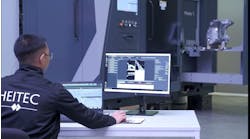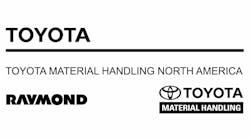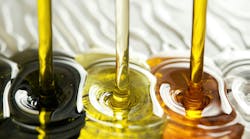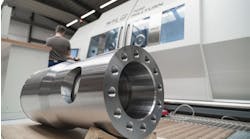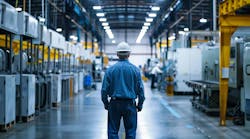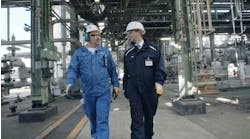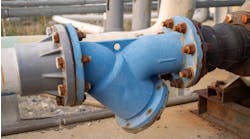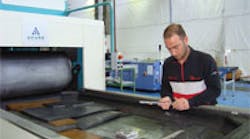The DEMA group designs and manufactures aerospace components, serving as a Finmeccanica sub-supplier to Airbus, Boeing, and other major OEMs.
Rising aircraft and aerospace demand has created a need for greater capacity at Dema’s sheet metal forming operations, which had been using a low-pressure rubber pad press for most of its product volume. Once an expansion was decided upon, but before production process was chosen, Dema managers evaluated the potential efficiency improvements of a newer rubber pad press versus a Flexform ™ fluid cell press, an Avure Technologies design.
Operators conducted test on seven different sheet metal parts, measuring and recording parameters including production speed, manual part reworking time, part quality off the press, processing flexibility, and equipment and maintenance costs.
Simple Principle
Avure explains that Flexform presses employ a “relatively simple” operating principle. Unlike mechanical and hydraulic presses that use upper and lower forming dies, (often in three pieces), Flexforming uses a single, rigid, shape-defining tool half (known as a hydroblock or die). A sheet metal blank is placed over this die and pressed into shape by a flexible rubber diaphragm under uniform, hydrostatic pressures as high as 80 MPa (11,600 psi), an equivalent pressing force of up to 215 MN. Multiple tools and blanks are placed freely in large forming trays at each end of the press, and shuttle in and out of the central frame containing the pressurized diaphragm. Multiple part sizes, shapes and gauges can be formed in a single one- to three-minute cycle.
The results of the tests clearly favored the Flexform press. Total production and reworking time for the seven test samples was 26% that of the existing rubber pad press, and 50% of the newer rubber pad press. The 800-bar operating pressure of the fluid cell press, substantially higher than the other presses evaluated, resulted in more accurate forming to close tolerances and indicated in a significant reduction of spring back. Hours required for manual rework and calibration were reduced by 76%.
The press the Dema selected is the Flexform QFC 12-800, a new mid-size model introduced by Avure in 2007 to suit the capacity and part-size requirements of Tier 1 suppliers, such as Dema Group. Its 12-meter forming tray can produce multiple parts in a single two- to three-minute cycle, and is well suited to the lower volumes and frequent tool changes common in the aerospace industry. Pressure is applied by a flexible diaphragm that has been redesigned to cost a fraction of older styles, and that can be repaired or replaced in a matter of hours. The press was installed late last year at Dema’s Somma Vesuviana in Italy. It’s in full operation now.
“With the new Flexform press, we can now form larger and more complex parts than with the rubber pad press”, said Agostino Marino, Dema general manager. “This has significantly expanded the capabilities we can offer our customers, and at the same time has lowered our production and maintenance costs. We were quite pleased with the excellent support provided by the Avure project management team throughout the build and install process.”

